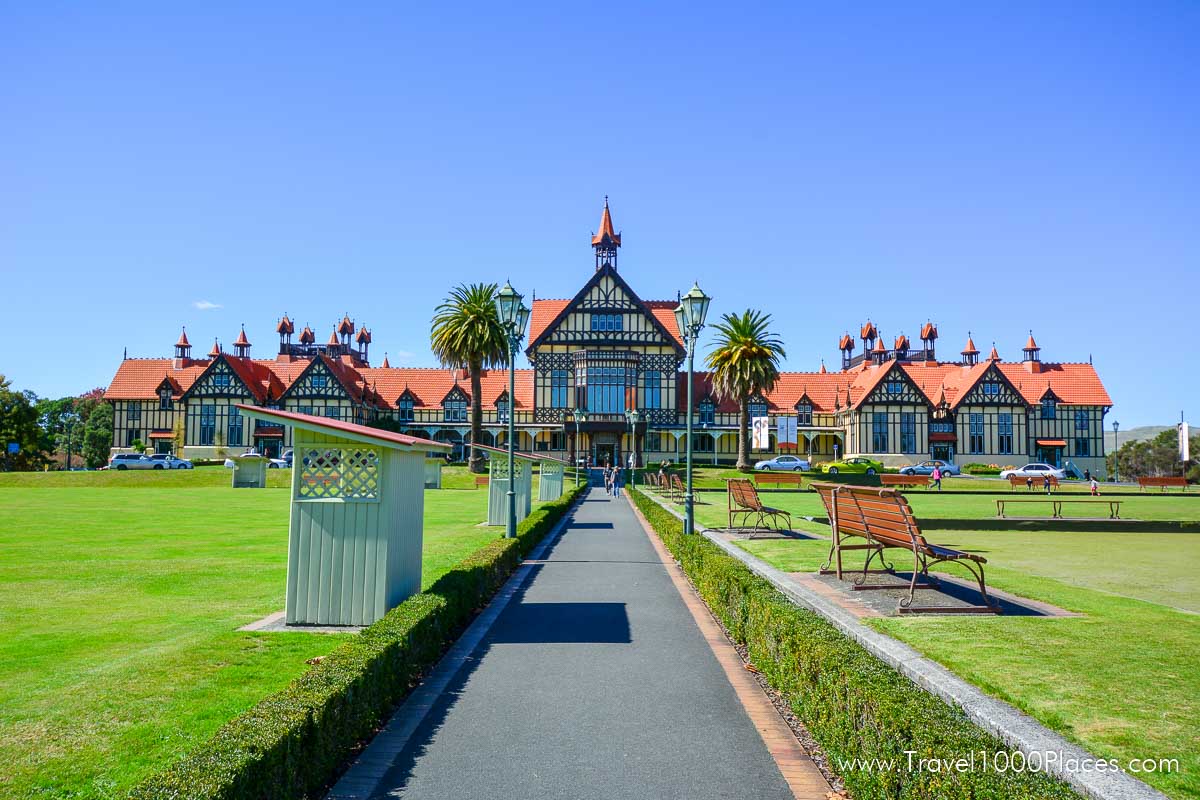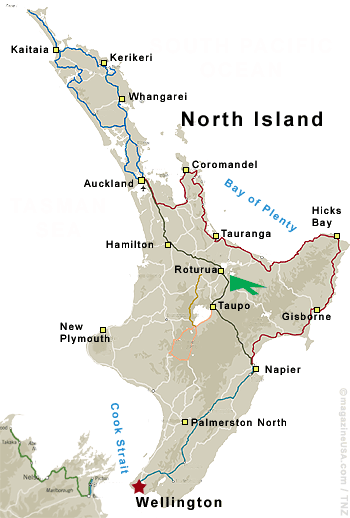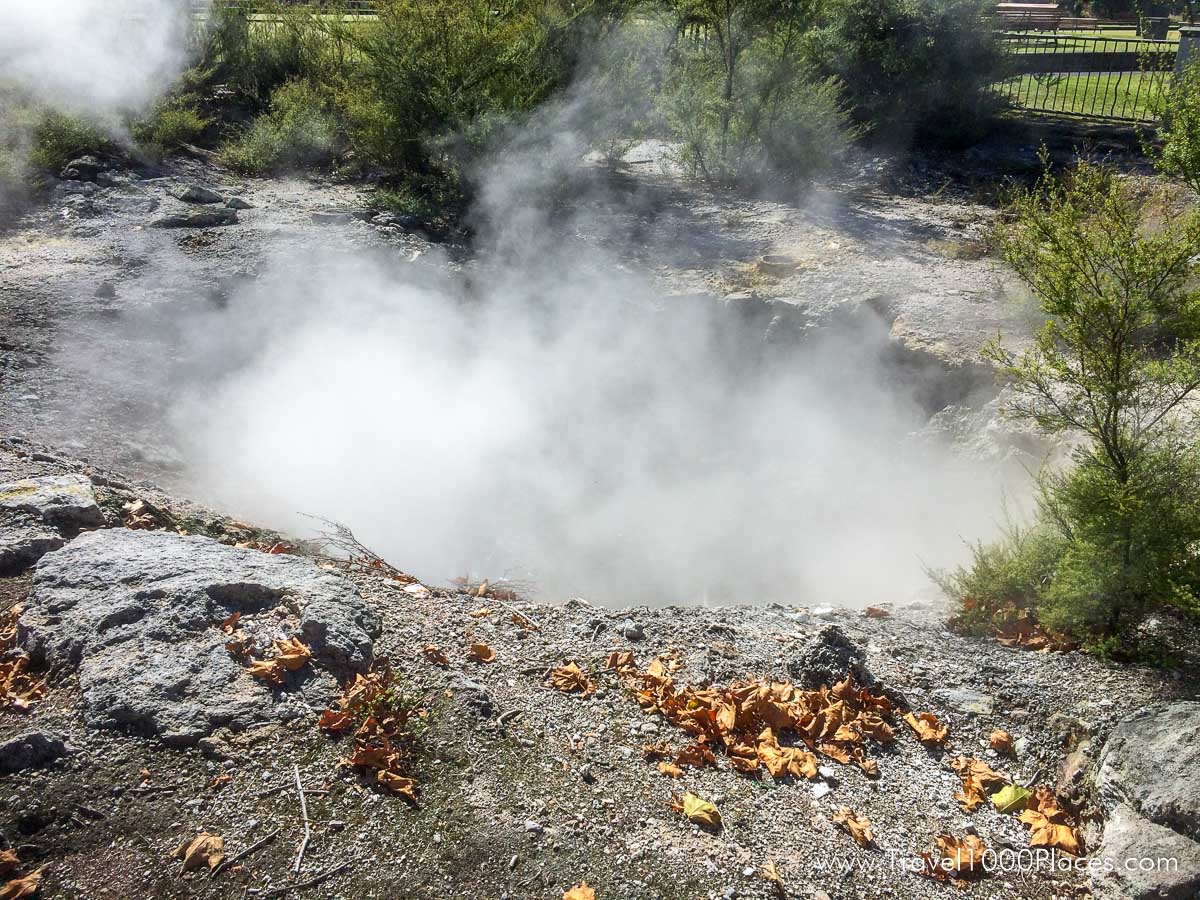
Tight connection: Maori Culture and Rotorua

Maori Culture Visitors to New Zealand are presented with many opportunities to experience Maori culture first-hand. The best-known of these is the thermal region of Rotorua in the North Island, where tourists can experience Maori kai (food) cooked on hot stones underground as part of a traditional hangi. They can also enjoy a Maori powhiri (welcome ceremony), visit local marae (meeting grounds), listen to kapa haka (traditional performances of song and dance) and relax in the popular thermal pools.
Maori culture has been passed on from generation to generation through music, carvings, art, storytelling and reciting genealogies (whakapapa). The strength and beauty of Maori art is evident in architectural carving and interior designs of marae, and in ornate whakairo (carvings) in wood, bone or pounamu (greenstone or jade) for pendants and other taonga (treasures). Carving and weaving skills arose from the practical requirements of traditional Maori lifestyle. Fibre for clothing, ropes and other uses was created by weaving flax and other natural fibres.
Hard New Zealand pounamu (greenstone or jade) was originally made into weapons and carving implements. Native wood was carved into spiritual objects that adorned Maori meeting houses (wharenui) and canoes. The modern outlet for the creation of such traditional objects comes through artworks, many of which are highly sought after in the art world.
Cultural Mix
The marriage between the Maori and European traditions in New Zealand has led to some unique cultural events. Rotorua”s Opera in the Pa is an example of the way in which Maori and Pakeha (European) influences have given rise to a fresh Pacific culture.
Maori and Polynesian voices sing the operatic works of Verdi, Puccini and Mozart at the sacred Rotowhio marae (meeting place) in the Maori Village (Te Puia), against a backdrop of bush and geysers. The event happens every year late January.
Te Puia is the New Zealand Maori Arts And Crafts Institute in Rotorua, New Zealand
Te Puia
New name for Rotorua tourism icon The New Zealand Maori Arts And Crafts Institute in Rotorua has been re-launched as ‘Te Puia’.
Meaning ‘geyser’ or ‘geothermal’, Te Puia is the name of the hill behind the famous Pohutu, the world’s most easily accessible geyser.
Chief executive Andrew Te Whaiti says Te Puia has always been a place of sanctuary
and now its name is used in association with protecting traditional Maori arts, crafts and culture.
In times of threat, the people of Whakarewarewa would retreat to the safety of Te Puia, which is ringed by a moat of boiling water and mud “a dangerous place for any attacking party who didn’t know the area,” Te Whaiti says.
Te Puia will become the umbrella name for the three distinct experiences on offer.
‘The New Zealand Maori Arts and Crafts Institute’ name has been repositioned as one of the three sub-brands to clearly distinguish the carving and weaving schools from the visitor attractions.
Te Puia’s redevelopment plans include an enlarged working space for the carving and weaving schools and a new exhibition gallery.
Coinciding with the launch of the Te Puia name and brand, Korero Tuku Iho, the new nature walk also opened on 21 March 2005.
The nature walk has been designed to share the stories of Te Puia and the history of the Whakarewarewa Thermal Valley.
The section of the trail opened is only a third of what will eventually be a two-hour nature walk through the valley.
Te Whaiti says Korero Tuku Iho offers an interactive experience of the sights and sounds, using minimal signage.
The intuitive nature of the walk overcomes language barriers to traditional signage and gives tour guides great tools for story-telling.
“Walkers will need to study their surroundings carefully to see things like tools, carvings, drying berries and flax racks. They’ll also be encouraged to take their shoes off and feel the warmth of the path and sometimes even the earth’s vibrations,” Te Whaiti says.
Website: www.tepuia.com
Buried Village, Rotorua, New Zealand
Rotorua in the North Island of New Zealand features natural wonders such as calderas, crater lakes, trout, native bush walks,
geothermal mud pools and geysers, and volcanoes.
The Buried Village in Rotorua, lies in the shadow of one such volcano, Mt Tarawera that last erupted 10 June 1886. This eruption
was only one of many in the previous 1,800 years, and is recorded as New Zealand’s most devastating natural disaster.
Te Wairoa (the Buried Village) a nearby village that was a staging post for international visitors viewing the famous Pink and
White Terraces was buried beneath two square kilometres of hot lava, rock, ash, and boiling mud. Over 5000 square miles of
countryside was affected between the hours of 1.30 and 5.30am, resulting in the loss of 153 lives.
Today, you can view the remains of this Maori and European settler village through the excavated sites and displays at Te Wairoa
– the Buried Village, (the only one in New Zealand following a volcanic eruption.)
Self-guided tours are available also through the Museum at Te Wairoa, a journey through the chronological events and
superstitious sightings leading up to the eruption and the effect it had on lives and the area’s tourism livelihood. The
museum was awarded a Tourism New Zealand ‘Innovator Award’ for Cultural and Heritage Tourism – for the methods and
ideas used to interpret this story of the first tourism entrepreneurs within Rotorua, New Zealand.
Geysers wherever you look, Rotorua, New Zealand

Eyes on the Geysers
Of all New Zealand’s natural splendours, nothing surpasses the geothermal wonderland at Rotorua in the North Island’s central volcanic plateau. Geysers of mineral-rich boiling water spout plumes metres high, mud pools plop in lazy circles, and steam rises from the shores of the area’s numerous lakes.
Whakarewarewa is the traditional focal point for tourists and is also the sacred ground of the Ngatiwhakaue tribe of the indigenous Maori people. The Waimangu valley is another spectacular site and is significant as the only unmodified geyser field. Use of the thermal energy for electricity generation has lead to a decrease in activity, but much of its dramatic intensity remains.
Whakarewarewa Thermal Village
The Whakarewarewa Thermal Village is a Maori tourism product making a name for itself on the global stage. It is an authentic, living Maori village in Rotorua, set amidst steaming vents and bubbling hot pools. The tour of the village gives visitors the opportunity to experience the customs, traditions and way of life of Maori people in a natural environment.
Hot Stuff – Waimangu
Waimangu Volcanic Valley was created on June 10, 1886 and is the only hydrothermal system in the world wholly formed within historic times as a result of a volcanic eruption. The area, situated 20 minutes south of Rotorua city, is a scenic and wildlife reserve, protected by the Department of Conservation. Visitors can follow a walkway to see large craters filled with hot, coloured or clear water, silica terracing, hot running streams, fumaroles and hot springs. People can also take a 50-minute boat cruise in a crater lake (Rotomahana), and observe several endangered plants that exist beside the geothermal activity, along with many unusually thermally adapted plants.
Orakei-Korako geothermal wonderland
Orakei-Korako geyserland is home to the greatest number of active geysers of any geothermal field in New Zealand. The silica terraces which form the base of Orakei-Korako (meaning ‘Place of Adorning’) are noted as being the largest since the destruction of the pink and white terraces on the edge of Lake Rotomahana beneath Mt Tarawera in 1886.
The area, situated on the bank of the Waikato River 20 minutes south of Taupo, is a scenic geothermal wonderland. Visitors can access the area by boat and follow the walkway to see 23 active geysers, vast numbers of boiling hot springs, mud pools and native flora and fauna. A highlight for many is the thermal Ruatapu Cave (sacred hole) extending some 120 feet down to a hot pool at the bottom aptly named ‘Waiwhakaata’, meaning pool of mirrors. Its origin is still uncertain, but some theories suggest a giant hydrothermal eruption.
In earlier times the Waikato valley near Orakei-Korako was occupied by Maori of the Ngati Tahu subtribe of Tuwharetoa. The hot springs at Orakei-Korako were used by Maori women to cook, sparing them trouble of procuring wood for fuel, and to bathe and beautify themselves for ceremonies. It is suggested that after the eruption of Mt Tarawera in 1886, Ngati Tahu vacated Orakei-Korako to settle nearby at Waimahan and Ohaki. By the turn of the century all but two families had moved from Orakei Korako.
In the early 1900s the geothermal area was established as a visitor attraction when Europeans passed through the valley on-route between Rotoura and Taupo.
The Orakei Korako Cave & Thermal Park is located between Roturua and Taupo.
From Taupo: Turn onto Highway 1 at Wairakei. Approximate driving time is 25 minutes.
From Rotorua: Take Highway 30 to Highway 1 to view Atiamuri Dam enroute OR Take Highway 5 to Mihi Bridge and turn left. Approximate driving time is 45 mins

